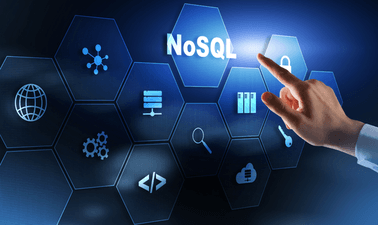As businesses transition to hybrid workforces, databases and project management systems must also adopt a mixed approach. Hybrid cloud servers enable companies to communicate and share information more efficiently. What qualifies as hybrid database architecture? What are its everyday applications? How can it help your business?
Let’s explore these questions and see what the hype is about.
What Is Hybrid Database Architecture?
First, it’s vital to nail down a concrete definition of hybrid architecture. This type of database possesses features of two distinct structures: relational and NoSQL. Relational databases store information in the form of traditional systems, namely tables. Employees retrieve data from these structures with language commands.
NoSQL — an abbreviation for “not only structured language queries” — is a database design that enables storing information outside of traditional relational structures. It uses document stores, key-value stores, graphs, and other unique methods to make it easier for complex organizations to access information. However, NoSQLs can be inconsistent.
A hybrid database architecture possesses the positive qualities of both structures. It stores data on a physical disk and in the software’s memory, combining to create a singular engine where analytics and collaboration can occur simultaneously.
A hybrid cloud is designed to break down the wall between data processing and analytics, enabling businesses to make quicker, more informed decisions about their projects. So, here’s a deeper dive into hybrid architecture’s impact on small businesses.
How Hybrid Architecture Helps Small Businesses
There are many benefits that hybrid database architecture can bring to small businesses, including better productivity, heightened security, and reduced costs. It can handle more data than the average relational or NoSQL database. Users also have more control over the information it collects. Here’s how it can help your company.
-
Better Productivity
Relational databases have limited amounts of space for data storage. Once you reach the limit, you must expand the server’s CPU, RAM, and solid-state storage device (SSD). NoSQL databases are also limited, requiring you to add more nodes over time. Everything happens on a physical disk.
A hybrid database enables you to back up your data regularly through the software’s memory. No manual alteration is required. This structure allows employees to organize and retrieve information more quickly. Hybrid databases also have automated features that analyze the available statistics and help workers create project plans with a high probability of success.
Other databases use horizontal and vertical storage techniques, while hybrids use rows and columns. This structure helps employees analyze and distribute the data with greater efficiency. This function even has a name — hybrid transactional and analytical processing (HTAP). The design is ideal for the modern world’s fast-paced work environment.
-
Heightened Security
Hybrid databases inherit the flexibility of NoSQL databases, but they also have the security features of relational databases. They use SQLs to create a standardized interface that only authorized users can use. Additionally, since hybrid databases utilize hardware and software, businesses can store their most sensitive data on a private cloud to protect it.
Authentication and auditing are near-automatic with hybrid databases. Managers can easily track employee activity, monitor important datasets, and identify emerging threats. It also helps ensure the company follows industry standards or regulations by spotting human errors.
-
Reduced Costs
Small businesses need to find money-saving solutions wherever possible. Optimizing data storage with a hybrid database can save lots of money by eliminating hardware costs and assisting with project management.
The cost of replacing hardware and third-party servers can debilitate a small business. Hybrid databases provide the option of using private servers, keeping storage costs low, and freeing up funds for other endeavors. This factor is more important than ever as companies center their operations on their websites and build remote workforces.
Most businesses aren’t reducing salaries for qualified employees to avoid labor shortages. Additionally, expensive digital tools like intelligent automation are becoming mainstream. Small companies that want to keep up with new technology and retention strategies must cut costs elsewhere. Hybrid databases help them accomplish that goal.
Hybrid Databases Belong in the New Working World
Many aspects of the workplace have seen drastic changes in the last few years, from new employee expectations to never-before-seen automated technology. Hybrid databases belong in the working world because of their ease of use, heightened cybersecurity, and reduced costs. They will partly influence upcoming business trends and help small businesses adapt.

